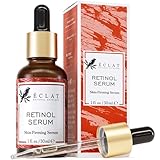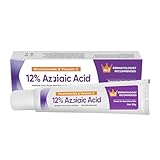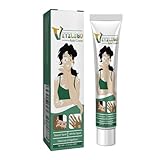
Do you have skin problems? You are not the only one. We list the most common skin problems and highlight treatments as well as nutritional tips and supplements you can take to help minimise your skin problems.
- Dry Skin
- Dilated capillaries
- Eczema
- Milia (whiteheads)
- Psoriasis
- Rosacea
- Uneven pigment
Dry Skin
Dry skin is a common problem. It is essential to moisturise on a daily basis. It is essential to put a rich moisturising cream on your face and neck at night.
During the day, make sure that your moisturiser is combined with sunscreen. Ensure coverage of the sides of your neck as well as the area around your collarbones.
There are many moisturisers on the market. Lush and Body Shop do some excellent ones containing a sun factor.
Browse Dry Skin Products
Dilated capillaries
Dilated capillaries occur due to climate, incorrect products, stimulants and smoking. Moreover, it can be hereditary. When sensitive skin is irritated due to temperature changes, alcohol or spicy food, the capillary veins on the face and neck dilate.
As sensitive skins are often transparent and fine, redness is especially visible.
Treatment: Protect your skin from harsh conditions like the sun, wind, and hot temperatures. Reduce your intake of smoking, alcohol, hot drinks and spicy foods.
- Nutritional tips: Low fat, low salt, high fibre, blueberries, buckwheat.
- Supplements: Lots of vitamin C and vitamin E.
Browse Skin Care Products
Eczema
Eczema, otherwise known as dermatitis, refers to a collective of skin conditions which affects all age groups. Here in the UK, a fifth of children have eczema, and around one in twelve adults.
When eczema is mild, the skin gets dry, itchy and hot. Whilst with more severe forms, the skin breaks, bleeds and becomes raw. Atopic eczema is considered to be a genetic and hereditary condition; other types of eczema are due irritants like detergents and chemicals, allergens like nickel, and yeast growths. In later life, eczema is related to blood circulatory problems in the legs.
Treatment: There are many treatments include ointments, surface and oral steroids and antihistamines. It is better for your skin to have cotton bedding as well as clothing and use non-biological washing powder.
Dust mites are also often a cause. So take steps to decrease the effect of house dust mite. Dietary changes and complementary therapies have also helped many suffering from eczema.
- Nutritional tips: Leave out dairy and wheat, processed foods, alcohol, citrus fruits, chocolate and coffee.
- Supplements: Antioxidants, essential fatty acids and digestive enzymes.
Browse Eczema Products
Milia
Milia, otherwise known as white heads, are frequent, keratin-filled spots which usually appear near your eyes, on your cheeks and on your eyelids. Milia can affect people of all ages, from the very young through to adults.
Treatment: You should never pick at white heads with pins or fingernails because you could get an infection or end up scarred. For self-treatment, hold a wet, hot facecloth over the skin for a couple of minutes; this will help to loosen and get rid of dead skin cells. An exfoliating facial wash with salicylic acid will help to remove the top layer of skin, enabling the cysts to fall out.
Browse Milia Skin Products
Psoriasis
This is a skin condition which affects around 3 per cent of the West. It is considered to be a non-curable disease. It begins deep in the immune system. However, it surfaces due to a dramatically increased number of skin cells in the skin’s top layers.
Normal skin cells mature in 28 to 30 days; then they are shed from the skin’s surface. For psoriasis sufferers, they experience a malfunction in the immune system, causing skin cells to regenerate more quickly, every three to four days. As skin cells gather, they form scaly areas of skin.
Treatment: Steroids, coal tar preparations, occlusion therapy (whereby your skin is covered by an airtight, waterproof wrapping of mild to moderate steroids or moisturisers), wet-wrap bandaging.
Within the private sector, the XTRAC FDA-approved Excimer laser system offers an 80 per cent likelihood of successful treatment and sustained recovery from this condition.
Moreover, Dead Sea minerals are considered to relieve eczema as well as psoriasis related irritation and itchiness.
- Nutritional tips: The key here is to include lots of fresh fruit and vet in your diet as well as oily fish, low fat, low sugar and no dairy. Omit alcohol, spicy foods, greasy foods, refined carbohydrates, processed foods, additives, caffeine and sugary drinks.
- Supplements: Plenty of essential fatty acids.
Browse Psoriasis Products
Rosacea
Should you have a history of blushing, or if your face flushes in the heat, you could have the first stage of rosacea. Environmental factors, such as, too much sun as well as hormonal changes can trigger rosacea. This is characterised by a red, uneven complexion as well as broken veins.
This is a common condition amongst women and accounts for a third of hospital consultations. Heat aggravates this condition and individuals with sensitive, fragile or reactive skins are more prone to rosacea.
Treatment: Conventional treatment consists of oral and surface antibiotics. Erythromycin is an antibiotic which is commonly prescribed for rosacea patients, however, it is has been associated with muscle pains and spasms. SOS cream made from 100% natural ingredients.
- Nutritional tips: Omit cow’s milk, chocolate, sugars and drinks which bring about facial flushing. A diet high in lots of raw vegetables and fruit is a must.
- Supplements: Antioxidants, essential fatty acids and digestive enzymes. The echinacea herb is considered to be helpful in the treatment of rosacea.
Browse rosacea Products
Uneven pigmentation and vitiligo
Uneven pigmentation is considered to be caused by environmental stress, too much UV exposure, too much melanin which gathers together in cells or an ongoing increase in melanin production and a slow down in melanin dispersion, which contrasts the difference between pigmented and normal skin areas, with the skin looking uneven.
On the other hand, vitiligo is a skin disorder whereby white skin patches appear on different parts of the body. The skin becomes white as the cells responsible for brown pigmentation production have disappeared.
There are over 500,000 vitiligo sufferers within the UK, with half of those cases appearing before the age of 20.
- Treatment is steroid creams as well as PUVA (combination of psoralen medication and UVA treatment.




















